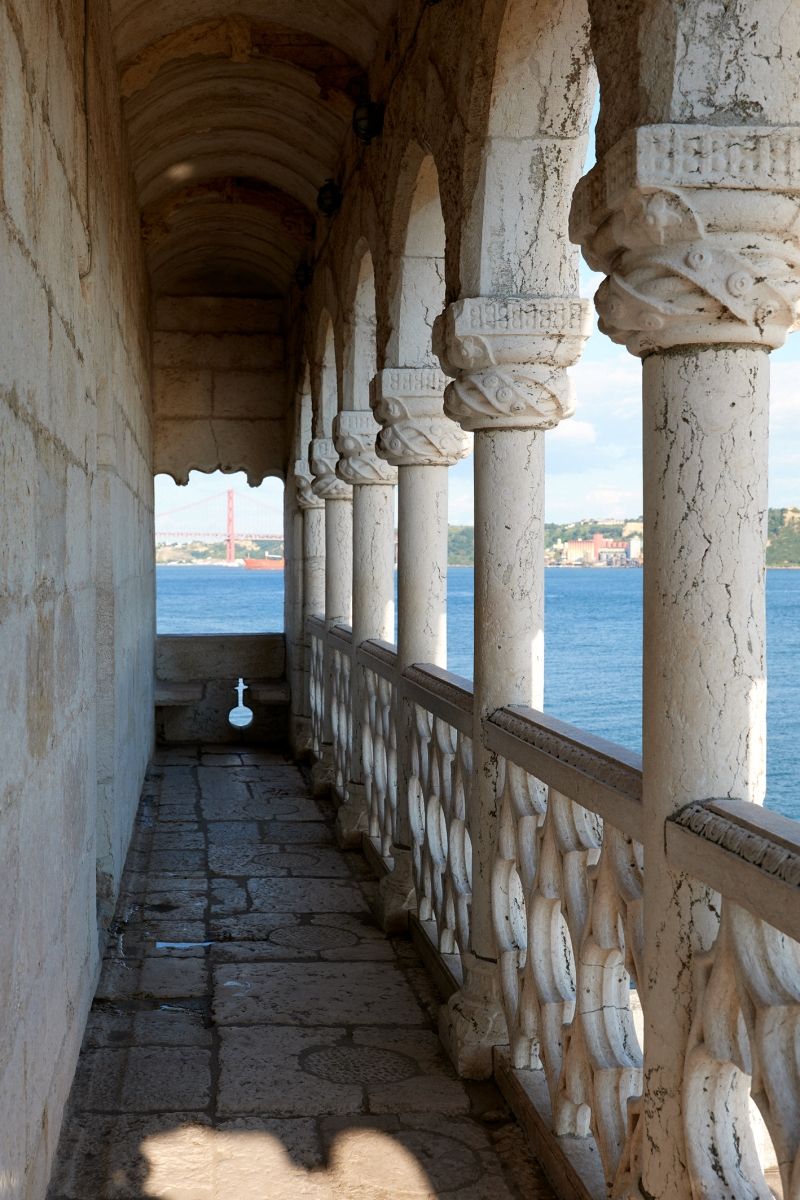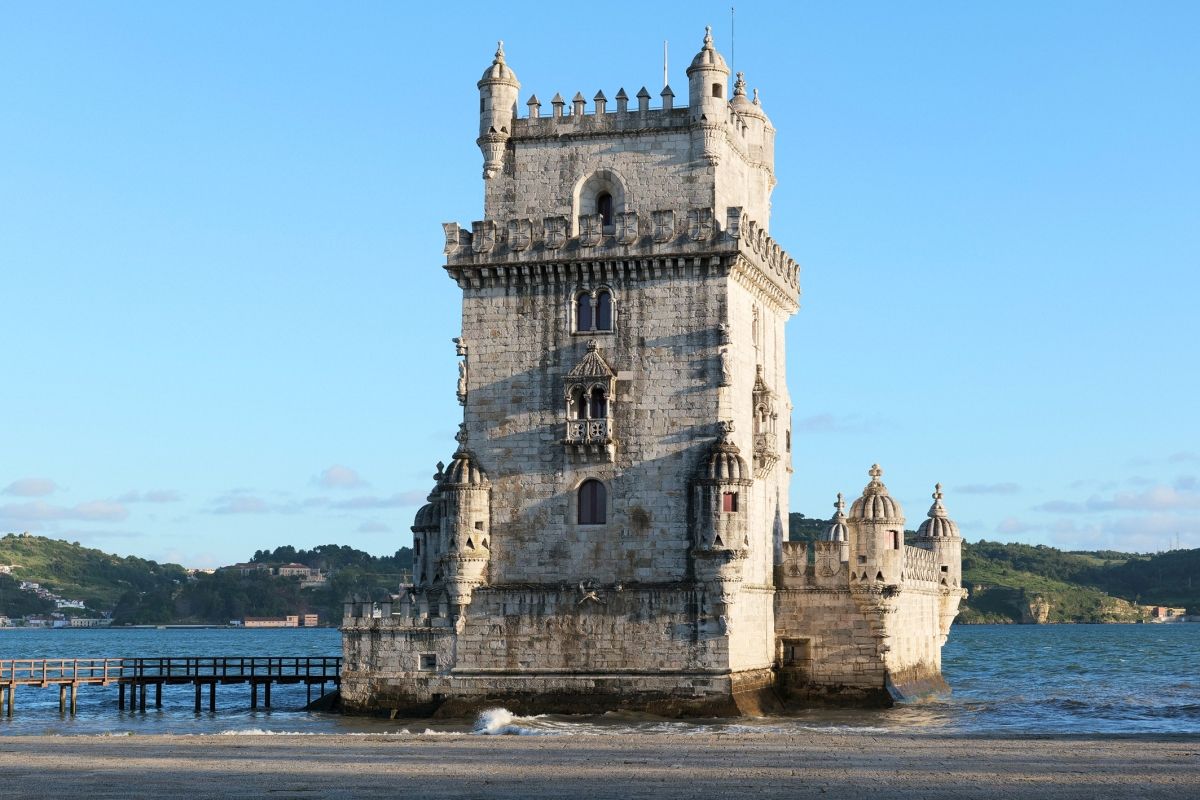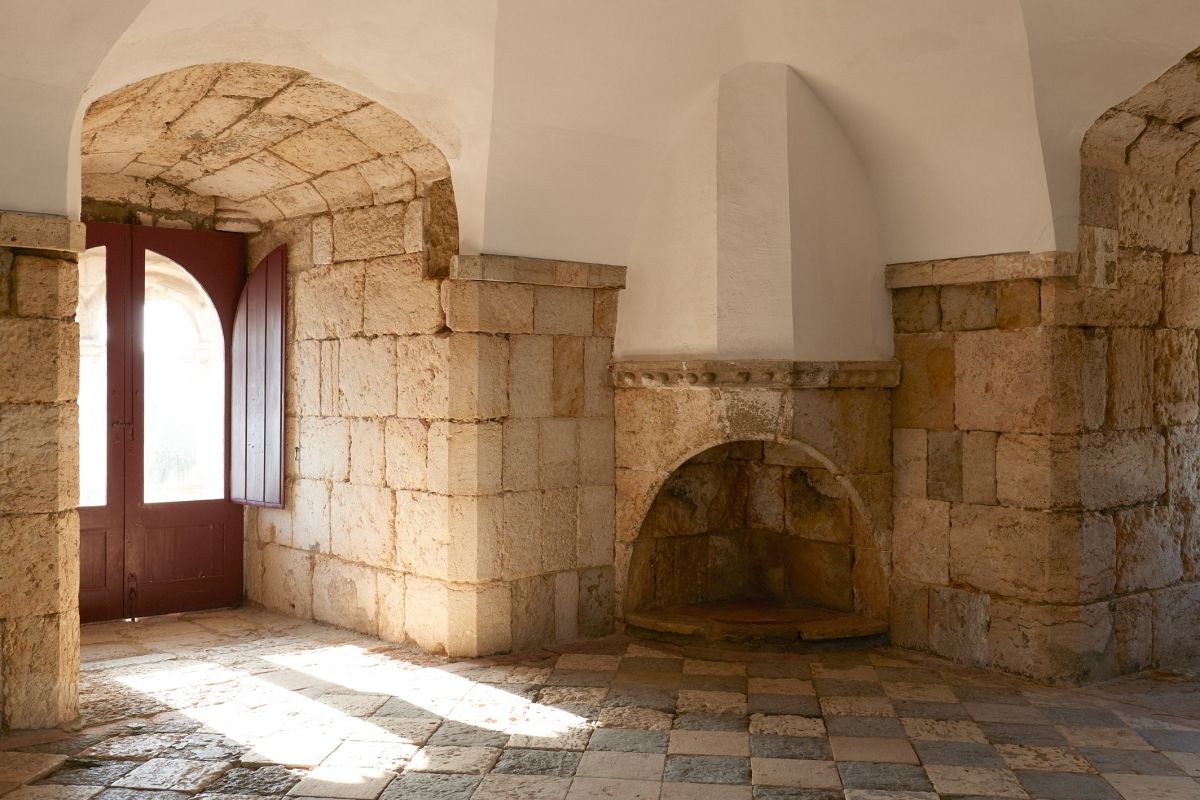The Belém Tower was inscribed on the UNESCO World Heritage List in 1983 and is an identity symbol of the city of Lisbon and Portugal in the world. It is historically and artistically associated with the Jerónimos Monastery and the Portuguese Discoveries.
Built between 1514 and 1519 on a basaltic surface, some distance from the north bank of the river, it combines two distinct architectural models: the tall tower, like a medieval keep, and the bulwark, a modern military device.
In addition to the building's structure, the festive "Manueline" late Gothic decoration style points to the fact that it was built during the reign of D. Manuel I (1495-1521). The royal heraldry, obsessively present, mixes with various ornamental motifs, such as ropes, knots and animals, along with several Moorish elements. It is worth mentioning the presence, on the south facade of the tall tower, of a large balcony, a loggia, designed to accommodate the ceremonial of the court apparatus that would certainly intensify upon the arrival and departure of the vessels.
The construction of a fortress on the north bank of the Tagus river, to defend the estuary had been planned since the time of King D. João II. However, it was during the reign of D. Manuel I that Francisco de Arruda, an architect experienced in defensive structures, designed and directed the execution works of the Tower dedicated to Saint Vincent, called Belém Tower since its early days.
During the same period and in the same area, the Jerónimos Monastery was constructed in front of Restelo Beach. It was a grand monastic house that was founded by D. Manuel I and was handed over to the Order of São Jerome. The construction work of the monastery began in 1501-02.
Many written and visual sources that testify the relationship between these two great enterprises. In the Chronica do Felicissimo Rei Dom Emanuel (1566-67), Damião de Góis describes how the King commissioned the building of the tower of S. Vicente, also known as Belém. This tower was founded within the water, in front of the building, to guard the Monastery and the port of Lisbon. Although the tower is not particularly large in size, its structure is magnificent. In whose tower one keeps watch night and day, so that no one can sail past it without being seen, and obeys the warning shots from the artillery.




